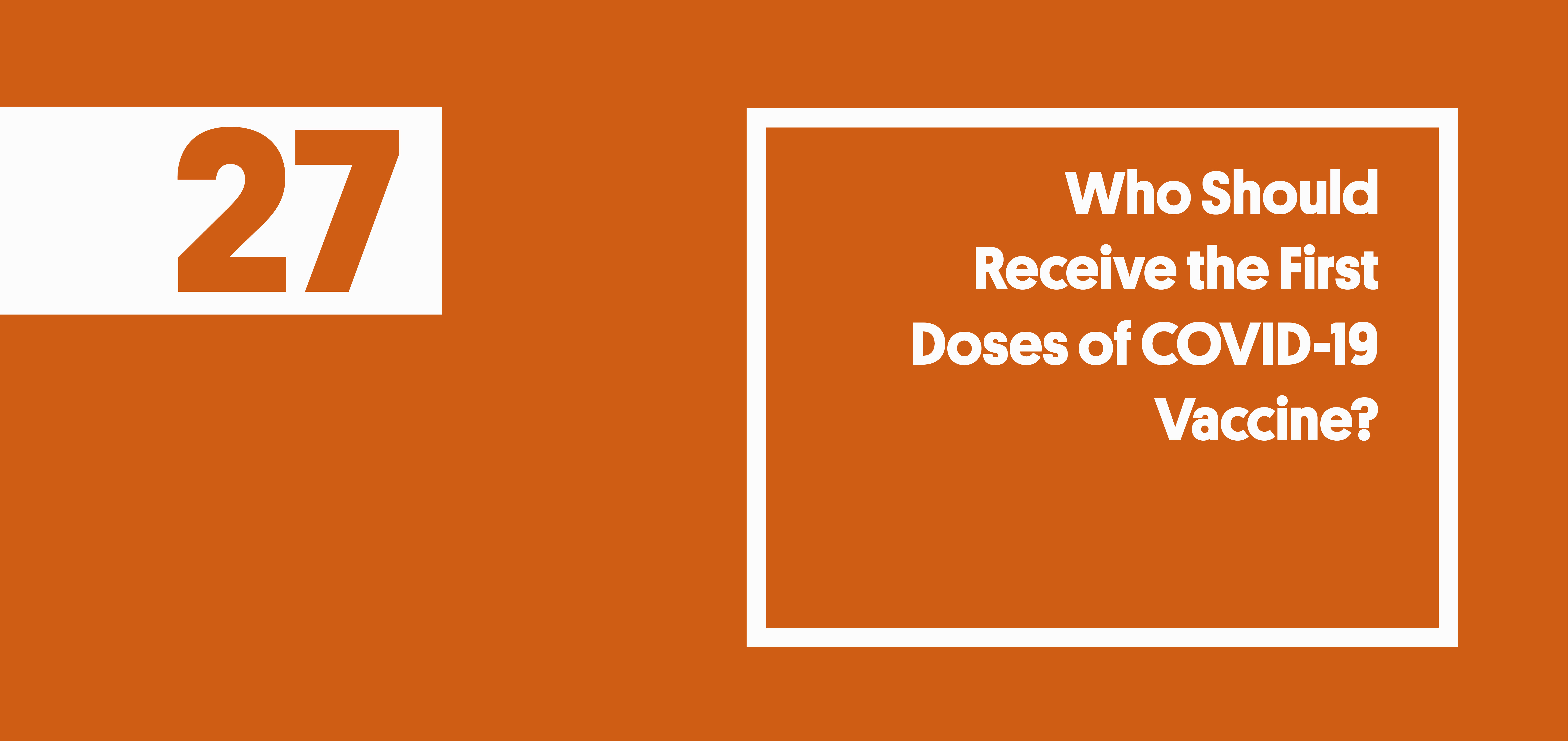Who Should Receive the First Doses of COVID-19 Vaccine?
Series | COVID-19 & response strategy #27
04.12.2020This document is part of a series of discussion notes addressing fundamental questions about COVID-19 and response strategies. These documents are based on the best scientific information available and may be updated as new information comes to light.
Written by Silvia de Sanjosé and Adelaida Sarukhan on behalf of the Multidisciplinary Collaborative Group for the Scientific Monitoring of COVID-19, a joint initiative of ISGlobal and the Barcelona Medical Council (COMB), in collaboration with the Catalan Association of Research Centres (ACER).
A safe and effective vaccine against COVID-19 is the only way to achieve a level of herd immunity that will allow us to regain some degree of normality. Fortunately, technological advances and the experience acquired over the past few decades have made it possible to develop COVID-19 vaccines at unprecedented speed: a process that normally takes eight to ten years has been compressed into 12-18 months.
One or more vaccines will very likely be approved by the regulatory authorities by the end of the year. However, even though the pharmaceutical companies have started mass-producing their vaccine candidates before we even know whether or not they work, the number of doses available in the first few months will be limited.
Governments must now develop vaccination plans to achieve the greatest possible impact with an initially limited number of doses.
For now, a number of questions surrounding the vaccine candidates remain unanswered. As the answers to these questions become clear, vaccination strategies should be revised accordingly. A number of issues related to vaccine distribution must also be taken into account.
Proposal of the Multidisciplinary Collaborative Group for the Scientific Monitoring of COVID-19 (GCMSC)
Following a review of the scientific literature and the reports cited above, the Multidisciplinary Collaborative Group for the Scientific Monitoring of COVID-19 (GCMSC) agreed that vaccination priorities will need to be established, and that these priorities should be based on achieving the maximum health benefit from a limited number of vaccines, providing protection first to the most vulnerable and those most at risk (essential workers).
As vaccine doses become available, they propose that groups be prioritised as follows:
- Health workers in contact with patients, including workers at residential elder-care facilities and first responders (fire fighters, police officers and other emergency personnel)
- People aged 80+ years and institutionalised elderly people.
- Adults aged 65-79 years
- People with underlying conditions: type 2 diabetes mellitus, chronic heart disease, including ischemic heart disease, chronic obstructive pulmonary disease, kidney disease, class 3 obesity (BMI >40 kg/m2 ), cancer patients under chemotherapy (if the type of vaccine allows it), immunocompromised condition (if the type of vaccine allows it), any underlying condition that could affect response to SARS-CoV-2.
- Institutionalised people with limited ability to isolate (prisons, immigrant detention facilities, etc.).
- Essential workers (public transport, education, food service, etc.)
- Adults aged 55+ years.
- Everyone else.
It should be noted, however, that people with evidence of previous SARSCoV-2 infection (PCR, antigen test or serology) should not be prioritised for access to vaccination in the early stages.
It is important to note that these prioritisation criteria can change as we learn more about the degree and duration of the protection provided by the different vaccines in specific risk groups. For example, if approved, a vaccine that reduces the spread of the virus but is less effective at protecting against the disease could be used preferentially to immunise the younger population.
The following are needed:
- Practical criteria for identifying members of priority groups, particularly those with underlying conditions.
- A communication plan to counter vaccine hesitancy or refusal
- Ongoing promotion of additional preventive measures (masks, ventilation, physical distancing) until transmission has been sufficiently reduced.
- A follow-up plan (including a national registry) to monitor the coverage, effectiveness (degree and duration of protection) and safety of the vaccines, as well as pharmacovigilance mechanisms to guarantee a rapid response in the event of serious side effects. This includes preparing a government-sponsored compensation programme.




